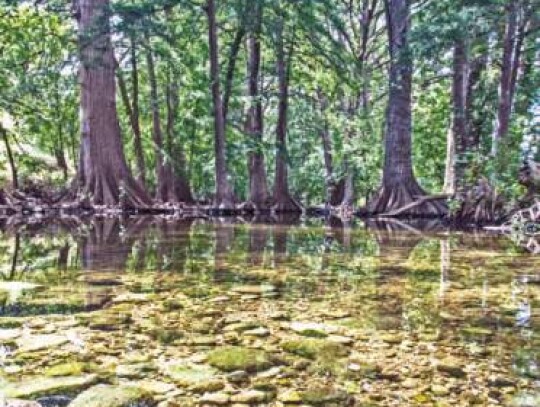AT THE TRAIL
The steady flow of rains has brought about a lot of questions regarding the current swimabilty of the Cibolo Creek. Over the past year, our “Swimming Not Recommended” signs and posts have frustrated and sometimes scared visitors. We too, recognize the bleakness of seeing the creek that we love so much, and was often so full of laughing, splashing kids and adults, lay calm and empty.
The truth is that water quality is a complex and dynamic subject that is affected by what is going on in the environment at that time, while also still being affected by past environmental conditions. Over the summer, we hope to share more with the public about the state of our area of the Creek and the science behind our recommendations. This is the first in a series that attempts to more clearly communicate what we are observing and what we are looking for as stewards of a part of Cibolo Creek.
To begin, the swimming warnings were put up in Summer 2022. Our water quality tests found that, when compared to the state standard for recreational contact in surface water bodies, the creek contained an unsafe level of Escherichia coli (E.coli) increasing the risk of waterborne illness. All natural waters contain microorganisms, and they are not necessarily harmful on their own or at certain levels. E. coli is a naturally occurring microorganism in the digestive tract of warm-blooded animals like humans and dogs. (Remember to pick up after your pets and dispose of poop properly so it doesn’t end up washed into the creek!)
Obviously, the record drought we experienced last year was a huge factor in the water quality change. This led to the amount of water in the creek being lower than usual. Even if the number of microorganisms remained constant, there was less flowing water to dilute the creek and keep it safe for recreation. Low water levels contribute to other water issues, which we will discuss in other articles.
Thankfully 2023 has brought with it rains, and in some areas, there has even been more rainfall at this point this year than in all of last year. This has allowed for the creek to have increased flow. However, it is also true that the water level is still lower than it has been in the past. At this point, we are at “Swim at your own risk,” which is common for public waters in Texas. Our Research Scientist and volunteers monitor the water quality regularly for changes and we will alert the public of any changes in our section of the creek.
This summer we are excited to be teaching our summer campers about water quality and enjoying other fun water activities like net fish, an activity that allows us to teach biodiversity and demonstrate the importance of water in their lives.
Please continue to read our upcoming weekly articles regarding water science and come participate in workshops and volunteer opportunities! Learn more at www.cibolo.org.








Comment
Comments